As the British Expeditionary Force in France was withdrawing towards Dunkirk, the Foreign Secretary, Anthony Eden, broadcast to the nation at 21.00 hours on 14th May 1940. He asked for men to report for duty in the local Volunteer Reserve. This force was soon referred to as the Local Defence Volunteers and eventually, The Home Guard.
1940
The Vale of Evesham area formation was given the title of the 4th Worcestershire (Evesham) Battalion and Major W. H. Taylor was given the task of recruiting in the towns and villages. Supt Price of the Evesham Police ably assisting him and during the next week the unit began to be formed. The organisation was based on existing Police boundaries and a meeting was held in Evesham on 19th May that was attended by many who afterwards became officers in the Battalion.
Col Sidney was given command of Broadway Company, with Capt George Lees-Milne as his assistant. Other companies formed were centred on Evesham, Pershore and Pinvin and an assortment of weapons and ammunition was collected. Colonel Taylor, as he became, went from village to village not so much appealing for recruits for the L.D.V., for the response was overwhelming, but telling them how to join up. Within a few weeks Col Sidney was appointed to assist Col Taylor as second-in-command of the Battalion and Capt Lees-Milne was appointed in charge of the Broadway Company.
During the winter, stores were accumulated and drills and exercises were undertaken.
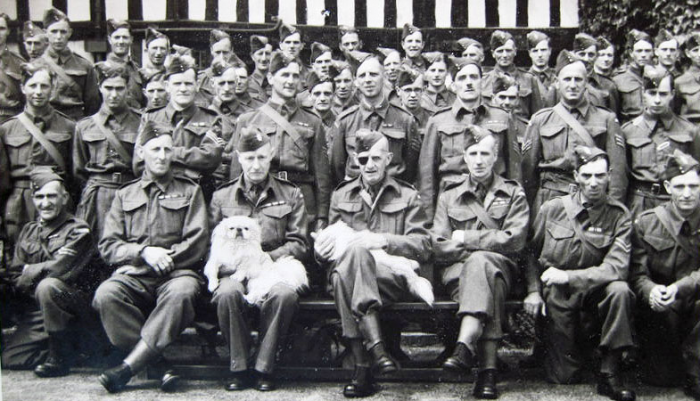
1941
In the spring, the Battalion was issued with US supplied P.17 rifles to replace their existing motley collection. They were very heavily greased, which brought forth comparisons to the clingy nature of Evesham clay soils. There was an increase in training exercises and land belonging to Edward Carter at Wickhamford was used for trench digging, dummy bombing practice, grenade use and fieldcraft. During the next few months over 1,000 of the Battalion utilised this facility to the south side of Pitchers Hill. Further exercises included one late in the year in a snowstorm.
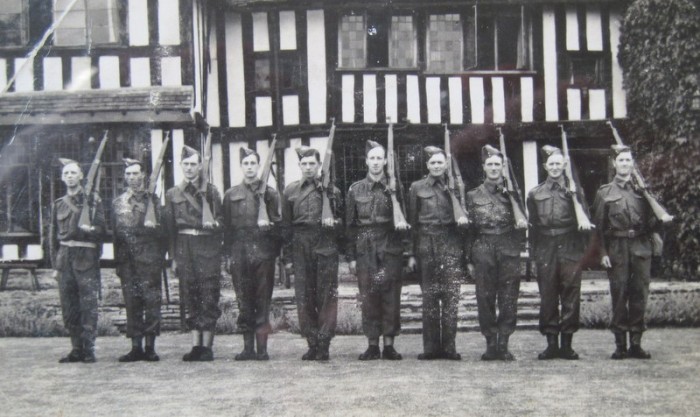
1942
Compulsory enrolment into the Home Guard was introduced on 16th February, which led to some difficulties because of the large influx of new recruits. (It is worth noting at this point that during the course of the existence of the Battalion, 4,273 men served from 1940-44 and that 94% were volunteers.) There were also various changes in officer personnel at this time and many Battalion exercises were carried out and sections were formed specialising in signalling, First Aid and transport. Much use was made of The Fladbury Range.
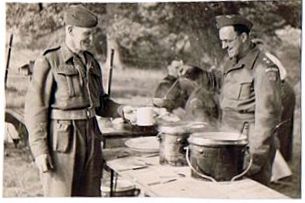
A high spot of the summer was a Battalion Parade on August Bank Holiday in Evesham in front of a crowd of 3,000 to 4,000 people. A camp was held at Tyddesley Wood soon afterwards and there were various courses for N.C.O.s and officers.
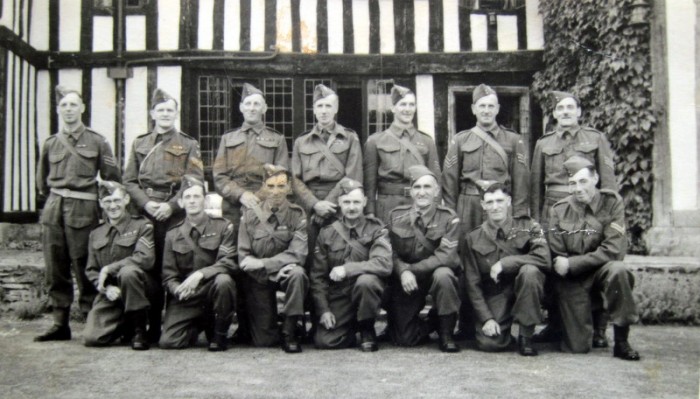
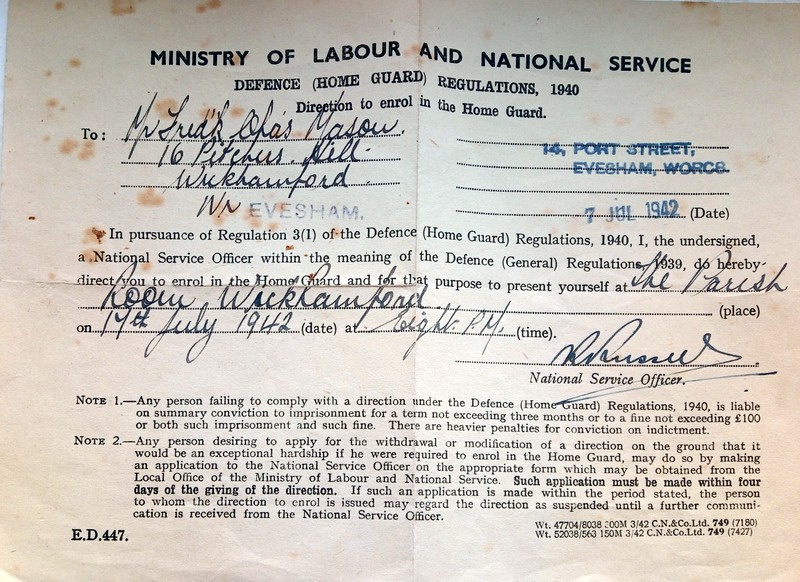
1943
The officers of No. 2 Broadway Company on 1st January 1943 were –
Company Commander ……....…..…Major G. C. Lees-Milne
2nd in Command………………....…….Capt W. Ogilvy, M.B.E.
No. 5 Platoon…………………....…………….….Lieut L. Poulter
Lieut J. Cross
No. 6 Platoon………………………..........Lieut H. T. Horsfield
No. 7 Platoon……………………………....…….….Lieut G. Sheaf
2nd Lieut F. H. J. Lock
No. 8 Platoon………………....…...Lieut E. A. McKillop-Clark
2nd Lieut E. W. Cotton
No. 24 Platoon…………….....….…….....…….Lieut S. O. Berry
Medical Officer……………....………..…..Capt Edgar Wharton
Intelligence Officer…....……..…..Lieut T. F. Newbury, M. C.
Training Officer………....…………….....…..Lieut S. G. Russell
Quartermaster…………....………….…….2ndLieut E. E. Clarke
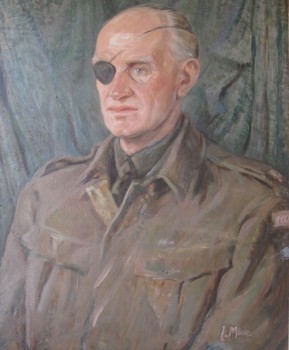
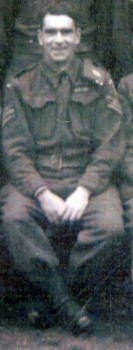
In the New Year, the Battalion took part in Exercise “Baloney” and, some months later, in Exercise “Tribe” in which Battle Craft was taught. During the summer official Battalion camps were held in The Dingle, Elmley Castle, by permission of General Sir Francis Davies. In all, some 1,200 men went through these camps, which included exercises with live ammunition.
Battle Inoculation Courses entailed 12-15 trips up and down Bredon Hill.
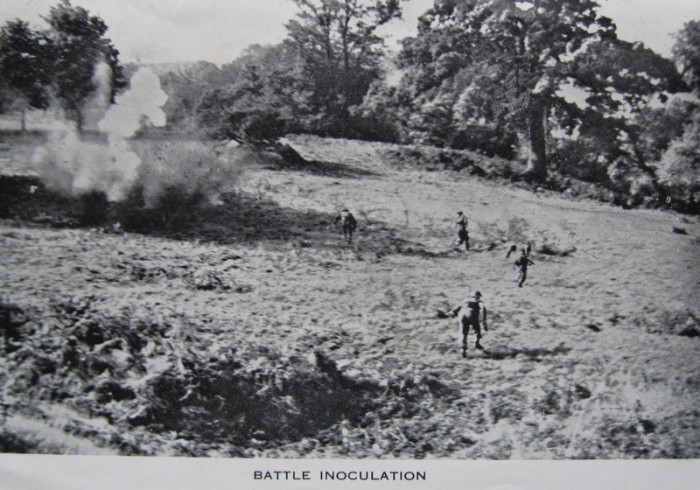
Early in the year, the Battalion was requested to co-operate in Civil Defence with a view to assisting in Fire Fighting and A.R.P. work generally. The transport section did many thousands of miles and successfully coped with huge demands that such a scattered Battalion area made on transport. The Battalion was particularly fortunate in that many of the leading market gardeners in the Vale willingly loaned their lorries to the Transport Platoon.
1944
The Battalion started the year with Night Operations, carried on with Weapon Training and new recruits received rifle practice at Fladbury Range. Some hundred men were trained each Sunday in grenade throwing, so that by the end of June every man had been through the course. Additional ranges were found at Northover where 29 m.m. Spigot Mortar teams could practice. The technique of Street Fighting was tackled and demonstrations were given in Evesham and Pershore.
In one Battalion camp on Bredon Hill an exercise was carried out which supposed a German aircraft had crashed with secret Radar apparatus on board. The Home Guard were positioned to protect the crash site whilst other soldiers played the part of German paratroopers sent to recover the equipment.
Many men were sent for a few days training with regular troops in the South-East area, where in almost every case they came under enemy fire and had some experience of air raids.
In inter-Battalion competitions the 4th Worcestershires were successful in winning the Despatch Rider’s event despite having machines of a vintage nature. They also won the Privates’ Team Rifle Competition.
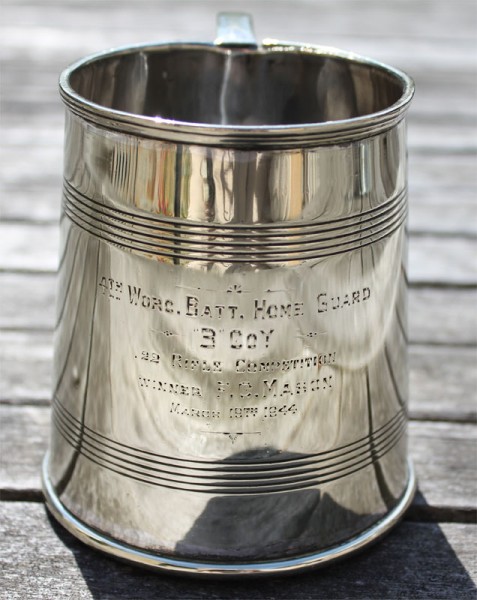
In July the Battalion was excused most parades because of hay-making and fruit picking. Owing to the wet weather the Battalion Commander decided to extend the period of harvest from the end of August to the end of September.
The Home Guard wished to carry on until the end of hostilities but this was not to be. The Stand Down arrangements proceeded apace and, following a business meeting of officers on 18th November, a dinner was held to which all officers, past and present were invited.
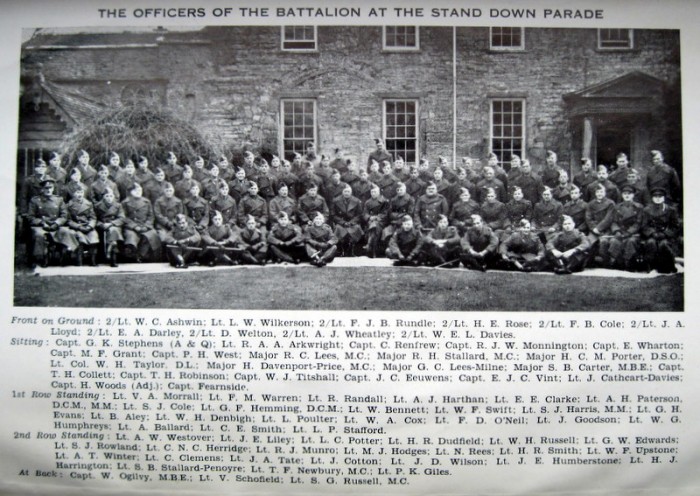
The officers took the opportunity to present to Col Taylor a silver cigarette box which was inscribed – “To Lieut-Colonel W. H. Taylor, D. L., from Officers of the Battalion in recognition of his leadership, 1940-1944”.
In common with other units throughout the country, the official Stand Down was held on Sunday, 3rd December, in Evesham. In spite of bad weather and transport difficulties, 86 officers and 800 men were on parade. They assembled on Merstow Green under the direction of R. S. M. Amphlett and started to march through the town at 15.15 hours accompanied by a band of the R. A. F. Col Taylor took the salute, accompanied by the Mayor, Councillor Mrs A. Nightingale and Supt E. Price on Saluting Base. In Abbey Park the C. O. addressed the Battalion with a few well chosen words, a verse of “O God, our help in ages past” was sung and after a short prayer the Battalion was dismissed and they stepped off parade into history.
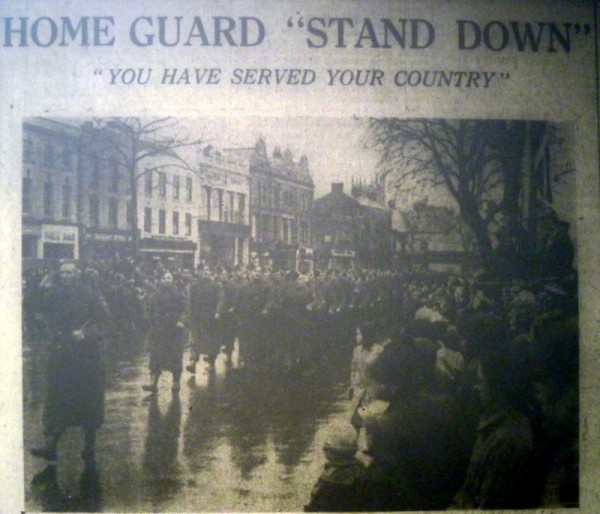
- as printed in the Evesham Journal.
Addendum 1
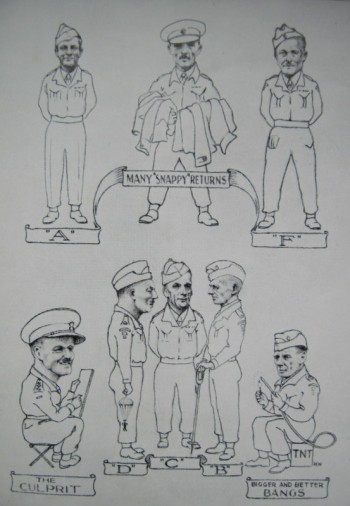
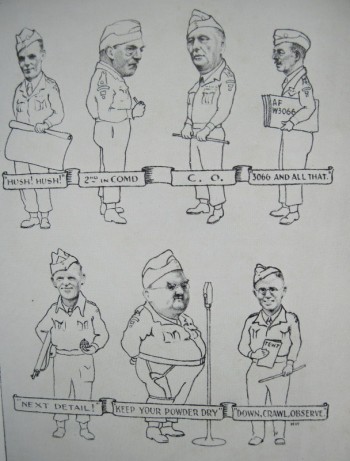
Sketches from the booklet - bottom row centre of the right-hand group is Sidney Carter of Wickhamford who was a BBC broadcaster.
Addendum - 2
…………………………………………………………………………………………..
SPECIAL ARMY ORDER
The War Office
14th November 1944
MESSAGE FROM HIS MAJESTY THE KING TO THE HOME GUARD
For more than fours years you have borne a heavy burden. Most of you have been engaged for longs hours in work necessary to the prosecution of the war or to maintaining the healthful life of the nation; and you have given a great portion of the time which should have been your own to learning the skilled work of a soldier. By this patient, ungrudging effort you have built and maintained a force able to play an essential part in the defence of our threatened soil and liberty.
I have long wishes to see you relieved of this burden; but it would have been a betrayal of all we owe to our fathers and our sons if any step had been taken which might have imperilled our country’s safety. Till very recently, a slackening of our defences might have encouraged the enemy to launch a desperate blow which could grievously have damaged us and weakened the power of our own assault. Now, at last, the splendid resolution and endurance of the Allied Armies have thrust back that danger from our coasts. At last I can say that you have fulfilled your charge.
…………………………………………………………………………………………..
Supplement
The photographs below come from an album of material in the Almonry Museum that probably originally belonged to Sidney Carter and the material in reproduced by the kind permission of the Vale of Evesham Historical Society.
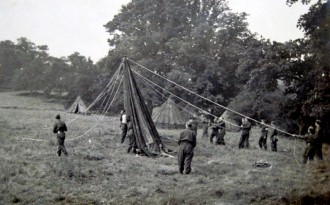
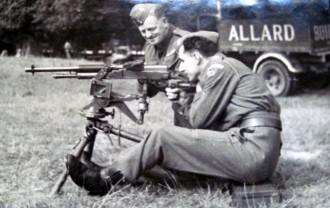
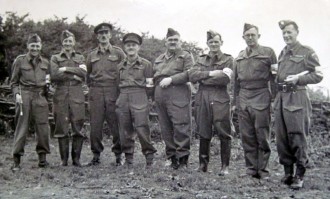
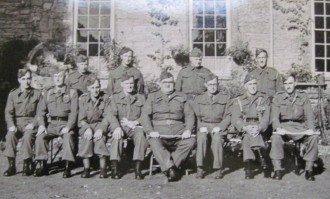
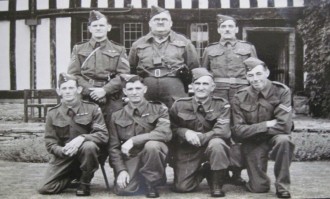
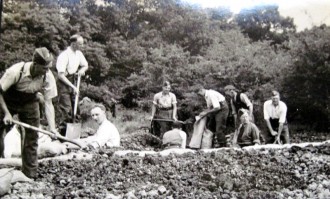
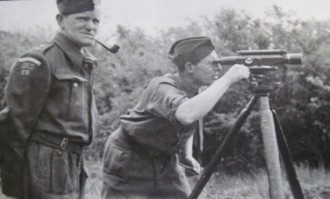
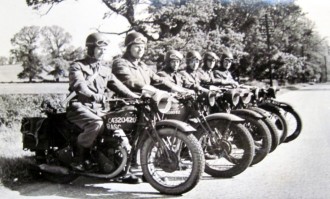
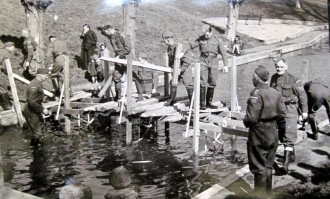
in Abbey Park, Evesham
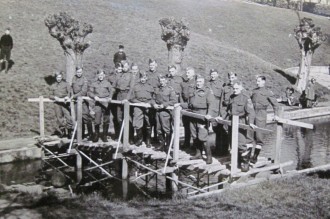
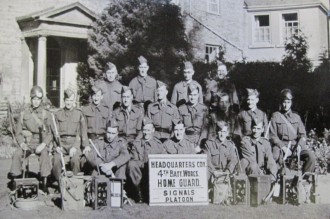
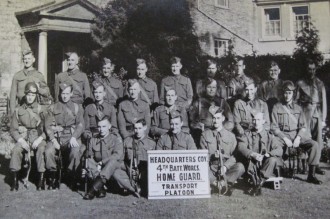
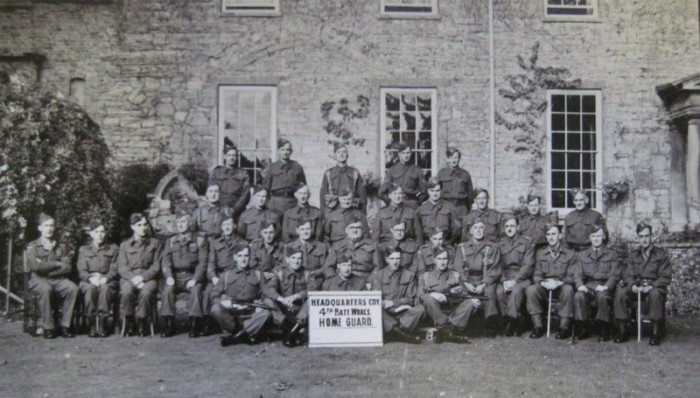
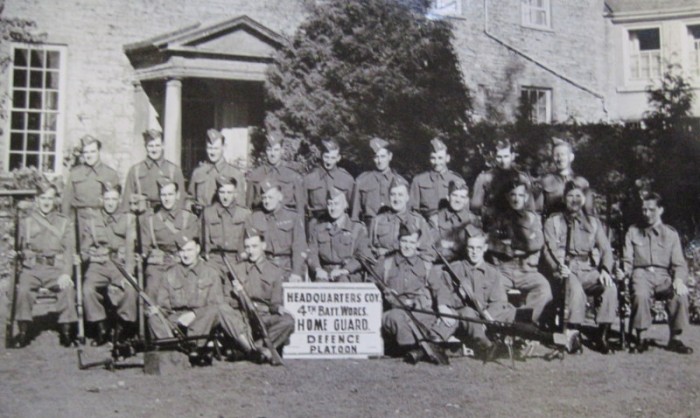
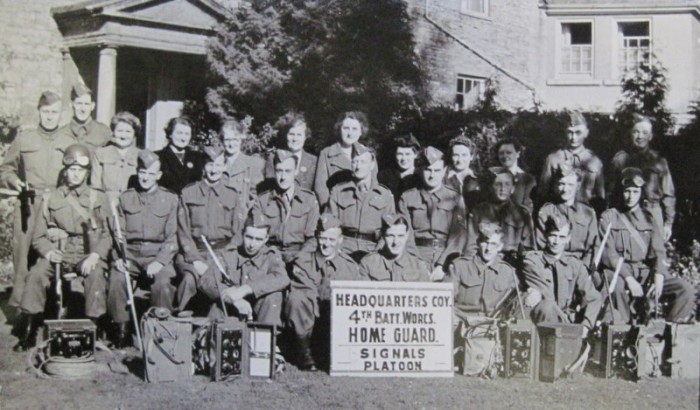
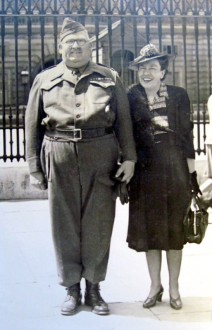
Acknowledgements
This article is based almost entirely on two publications on the History of The 4th Worcestershire (Evesham) Battalion Home Guard produced by the Journal Press, Evesham, during and shortly after the end of the War. These were kindly lent by John Poulter. Photographs 1 and 2 were supplied by Pat Goldstraw, 3 by Elizabeth Trenchard, 4 by Jenny Tweney, 6 by John Poulter and 7 by Val Harman. The portrait of George Lees-Milne (5) was made available for photographing by Simon Lees-Milne. The other photographs and sketches were in the booklets on the Battalion and The Evesham Journal.
Tom Locke, July 2012.
